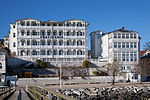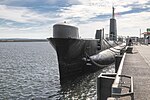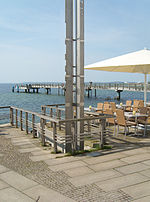Stubnitz
Forests and woodlands of Mecklenburg-Western PomeraniaGeography of Rügen

The Stubnitz is a hilly, forested landscape region on the east coast of the Jasmund peninsula on the German Baltic Sea island of Rügen – Germany's largest island. It covers an area of about 2,400 ha and runs from the town of Sassnitz to the municipality of Lohme, Today, it is almost entirely part of the 3,000 ha Jasmund National Park. The name Stubnitz is probably of Slavic origin; but the literature gives a wide variety of meanings – from Stufenland ("stepped landscape") to Waldung mit Bienenkellern ("woods with beehives").
Excerpt from the Wikipedia article Stubnitz (License: CC BY-SA 3.0, Authors, Images).Stubnitz
Borrin, Nord-Rügen
Geographical coordinates (GPS) Address Nearby Places Show on map
Geographical coordinates (GPS)
| Latitude | Longitude |
|---|---|
| N 54.55 ° | E 13.633333333333 ° |
Address
Borrin
18546 Nord-Rügen
Mecklenburg-Vorpommern, Germany
Open on Google Maps










